EMINENT ENGINEERS THROUGHOUT HISTORY
PREAMBLE
Who's the most outstanding engineer of all time? That's an open question with no right or wrong answer, only opinions, theories and opportunities for debate. Thankfully, plenty of engineers had gone before us and paved the path to a modern world that grants us access to so many inventions - inventions that make our lives easier. So whether you agree with my findings regarding the most outstanding engineers, it will at least give you some food for thought.
Although the modern engineering industry owes gratitude to hundreds of innovators over time, those covered in this series have to be the most influential engineers throughout history.
Isambard Kingdom Brunel 1806 -1859 (Died aged 53)
Isambard Kingdom Brunel FRS MInstCE was an English civil engineer who is considered "one of the most ingenious and prolific figures in engineering history, one of the 19th-century engineering giants, and "one of the most significant figures of the Industrial Revolution, who changed the face of the English landscape with his groundbreaking designs and ingenious constructions. Brunel built dockyards, the Great Western Railway (GWR), steamships including the first propeller-driven transatlantic steamship, and numerous important bridges and tunnels. His designs revolutionised public transport and modern engineering.
In 2002, Brunel was placed second in a BBC public poll to determine the "100 Greatest Britons."
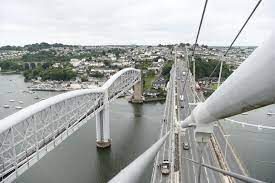
Early life
Isambard Kingdom Brunel was born on 9 April 1806 in Britain Street, Portsea, Portsmouth, Hampshire, where his father worked on block-making machinery.
He was named Isambard after his father, the French civil engineer Sir Marc Isambard Brunel, and Kingdom after his English mother, Sophia Kingdom.
He had two elder sisters, Sophia, the eldest child, and Emma. The whole family moved to London in 1808 for his father's work. Despite the family's constant money worries, Brunel had a happy childhood, with his father acting as his teacher during his early years. His father taught him drawing, and observational techniques from the age of four, and Brunel had learned Euclidean geometry by eight. During this time, he also learned fluent French and the basic principles of engineering. In addition, he was encouraged to draw interesting buildings and identify any faults in their structure.
When Brunel was eight, he went to Dr Morrell's boarding school in Hove, where he learned classics. His father, a Frenchman by birth, was determined that Brunel should have access to the high-quality education he had enjoyed in his youth in France; accordingly, at the age of 14, the younger Brunel was enrolled first at the University of Caen, then at Lycée Henri-IV in Paris.
When Brunel was 15, his father, who had accumulated over £5,000 in debts, was sent to a debtors' prison. After three months went by with no prospect of release, Marc Brunel was considering an offer from the Tsar of Russia. Finally, in August 1821, facing the possibility of losing a prominent engineer, the government relented and issued Marc £5,000 to clear his debts in exchange for his promise to remain in Britain.
When Brunel completed his studies at Henri-IV in 1822, his father had him presented as a candidate at the renowned engineering school École Polytechnique, but he was deemed ineligible for entry as a foreigner. Brunel subsequently studied under the prominent master clockmaker and horologist Abraham-Louis Breguet, who praised Brunel's potential in letters to his father. In late 1822, having completed his apprenticeship, Brunel returned to England.
Personal life
On 10 June 1830, Brunel was elected a Fellow of the Royal Society. Brunel married Mary Elizabeth Horsley (b. 1813) on 5 July 1836. She came from an accomplished musical and artistic family, the eldest daughter of composer and organist William Horsley. They established a home at Duke Street, Westminster, in London.
While performing a conjuring trick for the amusement of his children in 1843, Brunel accidentally inhaled a half-sovereign coin, which became lodged in his windpipe. A special pair of forceps failed to remove it, as did a machine devised by Brunel to shake it loose. Finally, at his father's suggestion, Brunel was strapped to a board and turned upside-down, and the coin was jerked free. He recuperated at Teignmouth and enjoyed the area so much that he purchased an estate at Watcombe in Torquay, Devon. Brunel commissioned William Burn to design Brunel Manor and its gardens to be his country home. Unfortunately, he never saw the house or gardens finished. Brunel died before completion.
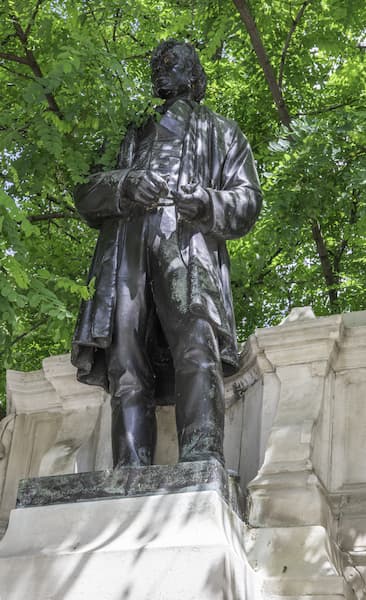
Bronze statue of Brunel at Temple in London
A celebrated engineer in his era, Brunel remains revered today, as evidenced by his numerous monuments. Current locations bear Brunel's name, such as Brunel University in London, Swindon shopping centres and Bletchley, Milton Keynes, and a collection of streets in Exeter: Isambard Terrace, Kingdom Mews, and Brunel Close. A road, car park, and school in his home city of Portsmouth are commemorated in his honour, along with one of the city's largest public houses. In addition, there is an engineering lab building at the University of Plymouth named in his honour.
During his career, Brunel achieved many fabulous engineering fetes.
Isambard Kingdom Brunel Achievements
Ocean-going Ships
Among Brunel's achievements was the development of the S.S. Great Britain, the first propeller-driven, ocean-going iron ship, which, when launched in 1843, was the largest ship ever built.
He designed and built three ships that revolutionised naval engineering: the S.S. Great Western (1838), the S.S. Great Britain (1843), and the S.S. Great Eastern (1859).
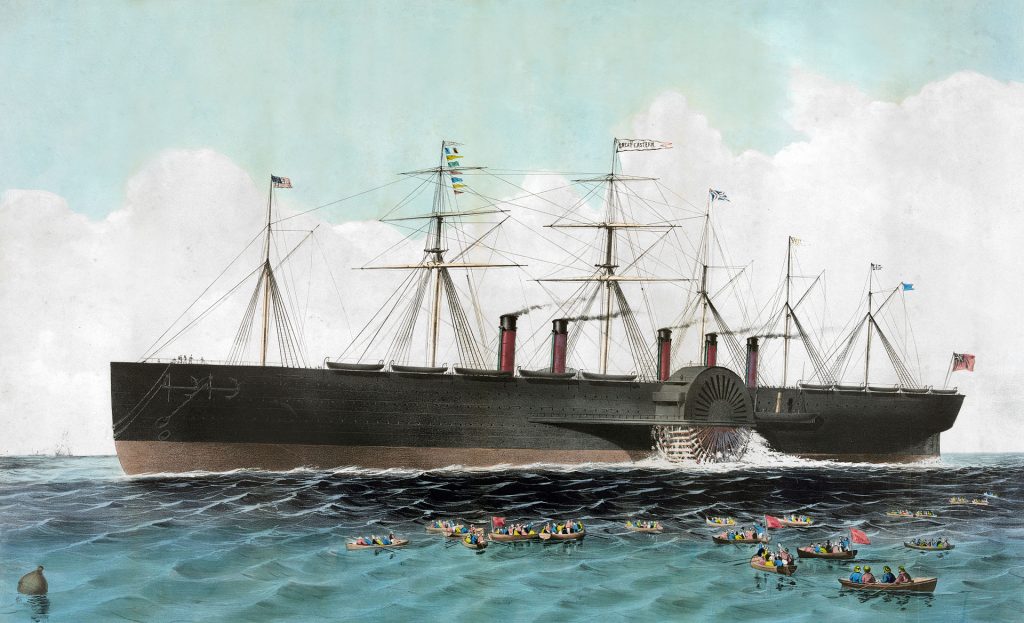
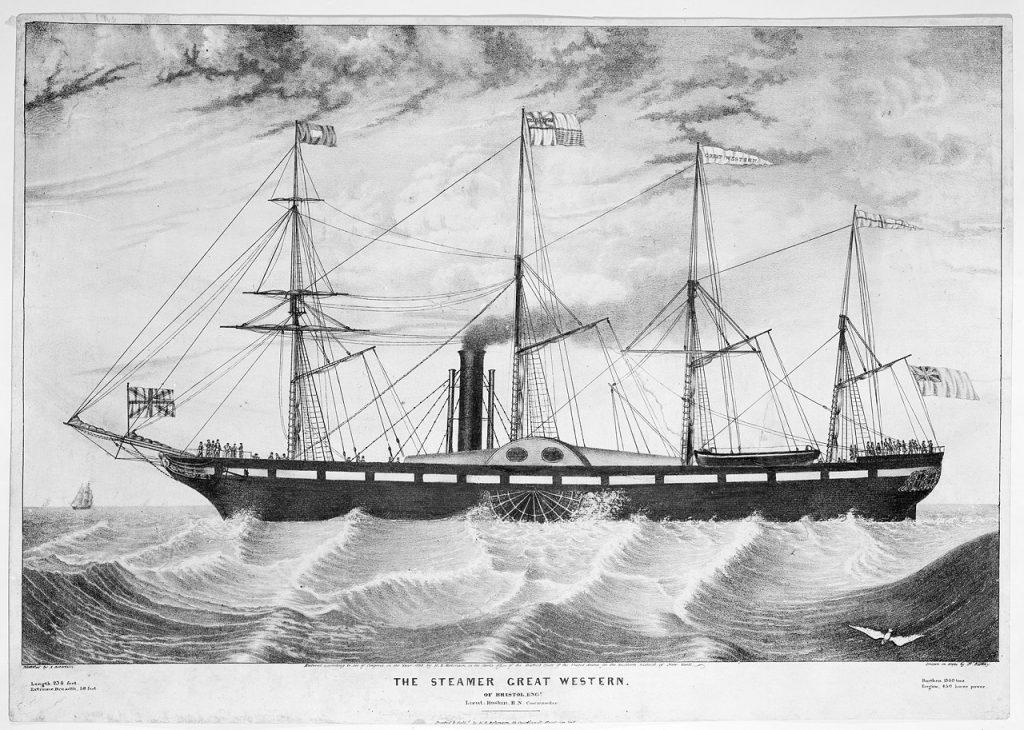
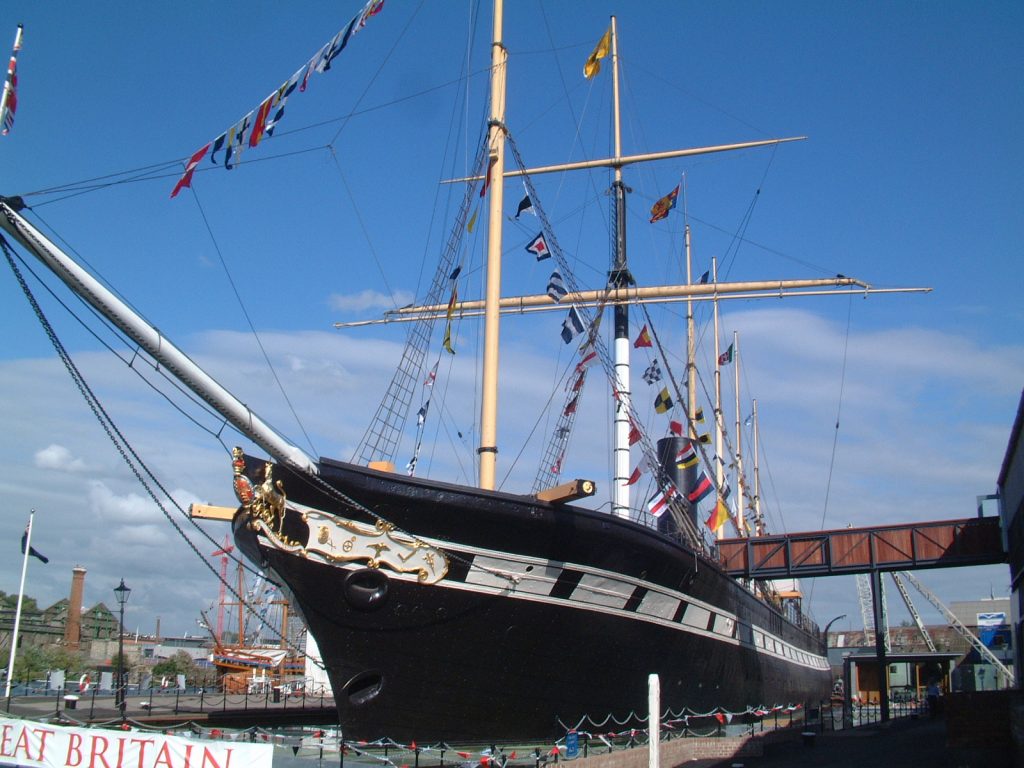
Civil Engineering Projects
The Maidenhead Railway Bridge (Opened-1 July 1839)
Maidenhead Railway Bridge (also known as Maidenhead Viaduct, The Sounding Arch) is a single structure of two tall wide red brick arches buttressed by two over-land smaller arches carrying the Great Western Main Line (GWML) over the River Thames between Maidenhead, Berkshire and Taplow, Buckinghamshire, England.
Maidenhead Railway Bridge over the Thames in Berkshire. This last was the flattest, widest brick arch bridge globally and is still carrying mainline trains to the west, even though today's trains are about ten times heavier than in Brunel's time.
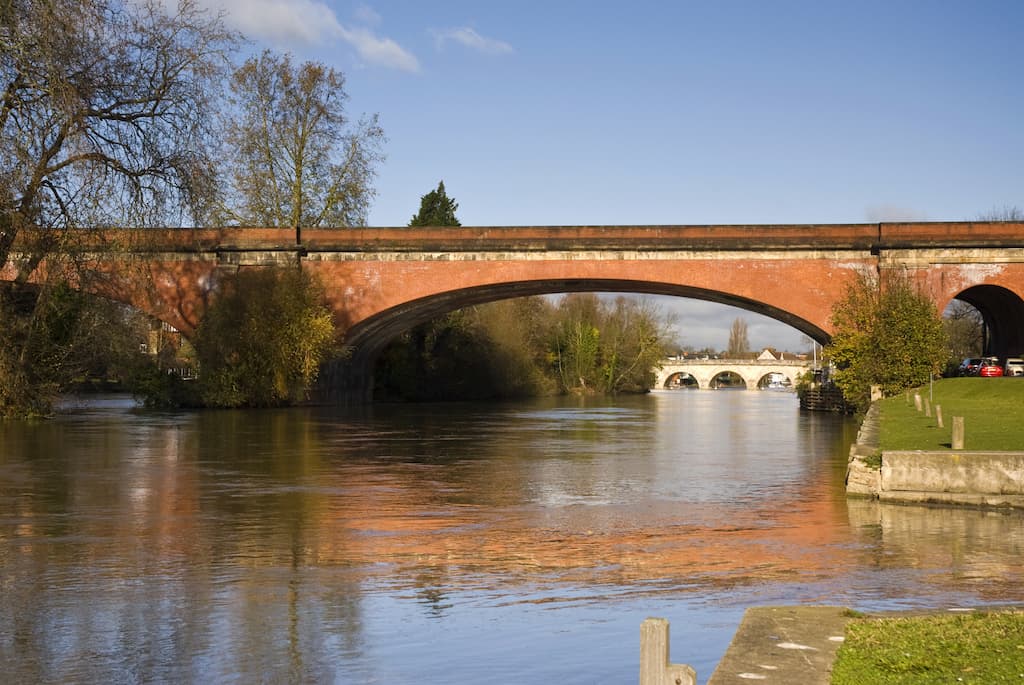
Isambard Kingdom Brunel designed the Maidenhead Bridge, completed in 1838 but not used until 1 July 1839. While under construction, the innovative low-rise arches of the structure attracted considerable criticism and controversy surrounding their alleged lack of stability; as a result, the centring for the arches was left in place until its destruction during a heavy storm in late 1839, yet the arches stayed up, effectively vindicating Brunel's design.
Today, the Maidenhead Bridge forms a key crossing along the eastern section of the Great Western Main Line, allowing trains to proceed to and from the line's terminus in the capital, London Paddington station.
Thames Tunnel (Opened: 1843)
Brunel worked for several years as an assistant engineer on the project to create a tunnel under London's River Thames between Rotherhithe and Wapping, with tunnellers driving a horizontal shaft from one side of the river to the other under the most complex and dangerous conditions. The Thames Tunnel Company funded the project, and Brunel's father, Marc, was the chief engineer.
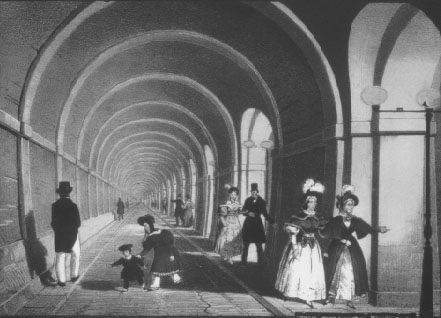
The composition of the riverbed at Rotherhithe was often little more than waterlogged sediment and loose gravel. Marc Brunel designed an ingenious tunnelling shield that helped protect workers from cave-ins, but two severe flooding incidents halted work for long periods, killing several workers and injuring the younger Brunel. The latter incident, in 1828, killed the two most senior miners, and Brunel himself narrowly escaped death. However, he was seriously wounded and spent six months recuperating. Nevertheless, the event stopped work on the tunnel for several years.
During Marc Brunel's lifetime, the Thames Tunnel was completed. However, Isambard, his son, had no further involvement with the tunnel proper.
In 1865, the East London Railway Company purchased the Thames Tunnel for £200,000, and four years later, the first trains passed through it. Subsequently, the tunnel became part of the London Underground system and remains today, initially part of the East London Line, now incorporated into the London Overground.
London Paddington Station (opened in 1854)
The present London Paddington station was designed by Brunel and opened in 1854. His designs for smaller stations on the Great western and associated lines that survive in good condition include Mortimer, Charlbury and Bridgend. Surviving examples of wooden train sheds in his style are at Frome and Kingswear.
The outstanding achievement that was the great western railway has been immortalised at Swindon Steam Railway Museum and the Didcot Railway Centre. The Didcot Railway Centre is notable for a reconstructed segment of 7ft 1/4 in (2,140mm) Brunel guage track and a very rare working steam locomotove in the same guage.
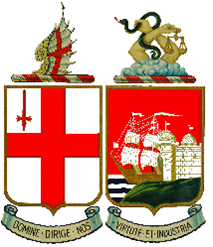
Hungerford Bridge (Opened: 1859)
Hungerford Bridge, a suspension footbridge across the Thames near Charing Cross Station in London, was opened in May 1845. Its central span was 676.5 feet (206.2 m), and its cost was £106,000. The old Hungerford Bridge was replaced by a new railway bridge in 1859.
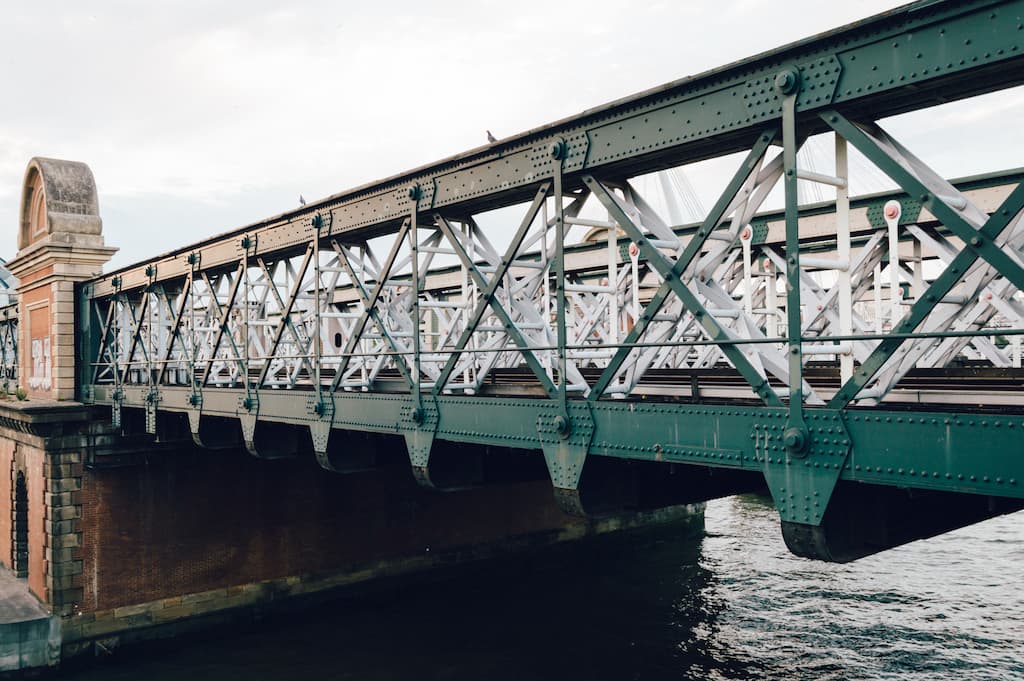
The first Hungerford Bridge, designed by Isambard Kingdom Brunel, opened in 1845 as a suspension footbridge. It was named after the then Hungerford Market because it went from the South Bank to Hungerford Market on the north side of the Thames.
In 1859 the original bridge was bought by the railway company extending the South Eastern Railway into the newly opened Charing Cross railway station. The railway company replaced the suspension bridge with a structure designed by Sir John Hawkshaw, comprising nine spans made of wrought iron lattice girders, which opened in 1864.
Royal Albert Bridge (Opened by Prince Albert on 2 May 1859)
Another bridge of Brunel's design was the Royal Albert Bridge spanning the River Tamar at Saltash near Plymouth.
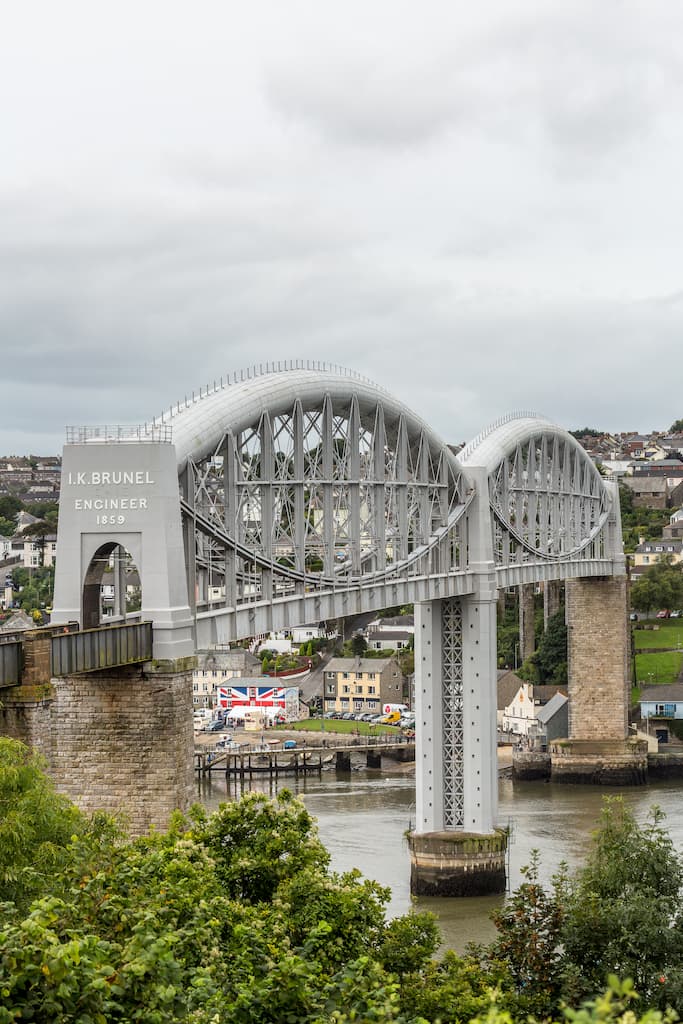
Brunel designed the Royal Albert Bridge in 1855 for the Cornwall Railway after Parliament rejected his original plan for a train ferry across the Hamoaze—the estuary of the tidal Tamar, Tavy and Lynher. The bridge (of bowstring girder or tied arch construction) consists of two main spans of 455 ft (139 m), 100 ft (30 m) above mean high spring tide, plus 17 much shorter approach spans. Opened by Prince Albert on 2 May 1859, completed in the year of Brunel's death.
Three Bridges, London (opened in 1859)
Brunel's last major undertaking was the unique Three Bridges, London. Work began in 1856 and was completed in 1859.
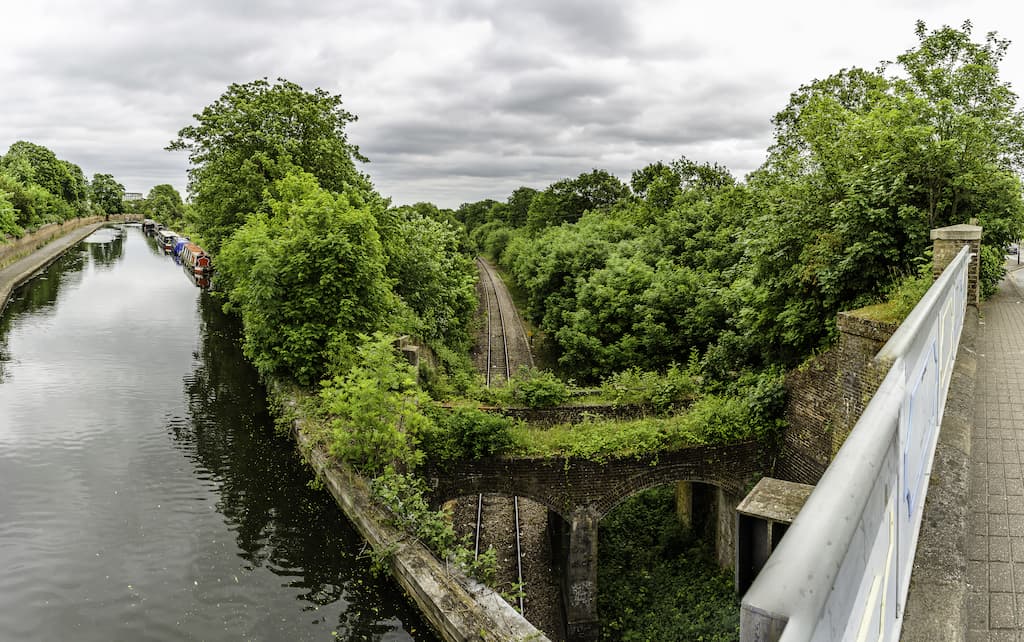
Three Bridges, properly known as Windmill Bridge, is a three level crossing near Hanwell in West London, United Kingdom. Designed by Isambard Kingdom Brunel, the bridges are a clever arrangement allowing the Grand Junction Canal, Great Western and Brentford Railway and Windmill Lane to cross eachother: road above canal above the railway. this allowed the railway to be in a deep cutting so it wsn't visible from Osterley Park.
The structure is a scheduled monument.
The Clifton Suspension Bridge (Opened in 1864)
A suspension bridge spanning a river gorge with woodland in the background.
The Clifton Suspension Bridge spans Avon Gorge, linking Clifton in Bristol to Leigh Woods in North Somerset.
Brunel is perhaps best remembered for the Clifton Suspension Bridge in Bristol.
https://harveyplanningconsultancy.co.uk/civil-engineering-pt3/
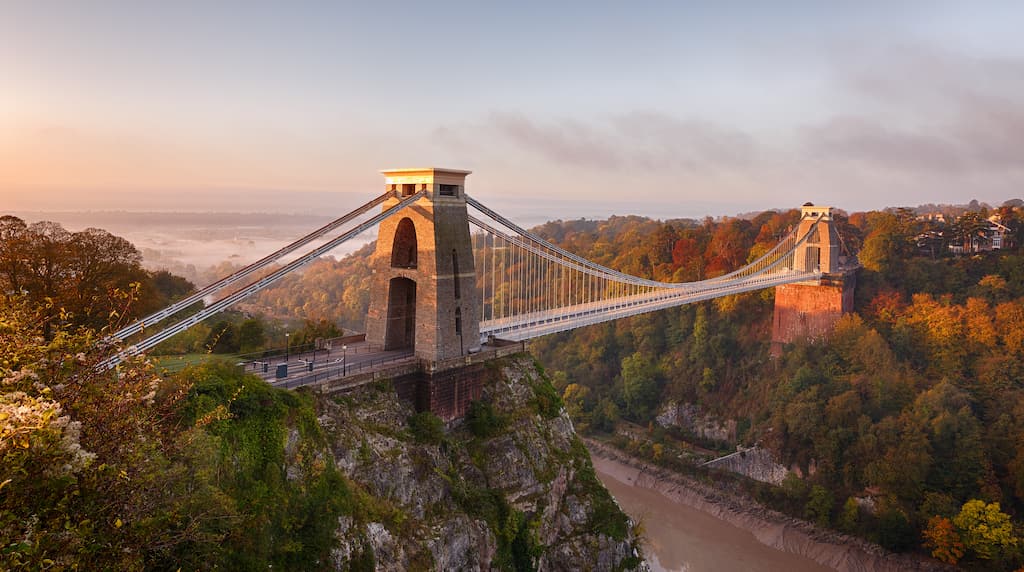
Work on the Clifton bridge started in 1831, but due to the Queen Square riots was suspended. The riots drove away investors, leaving no money for the project, and construction ceased.
Brunel did not live to see the bridge finished, although his colleagues and admirers at the Institution of Civil Engineers felt it would be a fitting memorial and started to raise new funds and amend the design. Work was recommenced in 1862, three years after Brunel's death, and completed in 1864.
The Clifton Suspension Bridge still stands, and over 4 million vehicles traverse it every year.
Brunel, a heavy smoker, who had been diagnosed with Bright's disease (nephritis), suffered a stroke on 5 September 1859, just before the Great Eastern made her first voyage to New York. He died ten days later at the age of 53 and was buried, like his father, in Kensal Green Cemetery, London. He is commemorated at Westminster Abbey in a window on the south side of the nave.
Accreditation
https://collegelearners.com/famous-engineers-without-degrees/
https://en.wikipedia.org/wiki/Isambard_Kingdom_Brunel
https://groups.google.com/g/sci.military.naval/c/8nVBXoOcrpU
https://structurae.net/en/persons/isambard-kingdom-brunel
https://alchetron.com/Isambard-Kingdom-Brunel
https://micawbercopperfield.fandom.com/wiki/Isambard_Kingdom_Brunel
Do you mind if I quote a couple of your articles as long asI provide credit and sources back to your website?My blog site is in the very same niche as yours and my users would certainly benefit from some of the information you present here.Please let me know if this okay with you. Thanks!
Thank you for your comments you are welcome to pass any information on to your colleagues
Regards
Michael Harvey
You are welcome
Regards
Michael Harvey